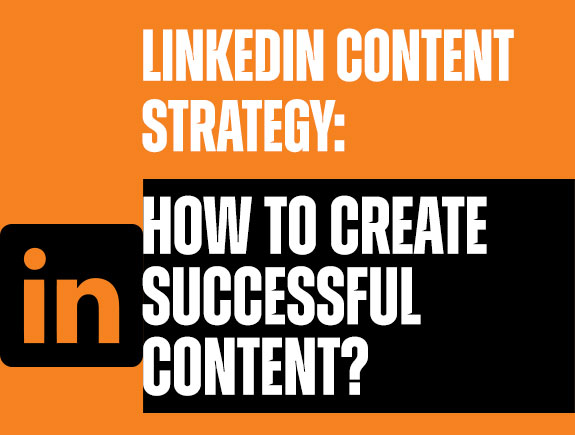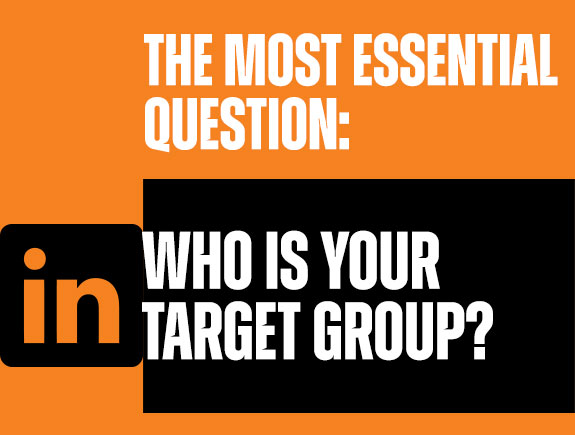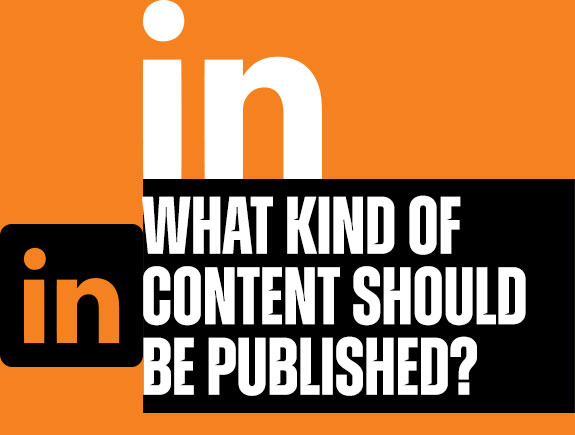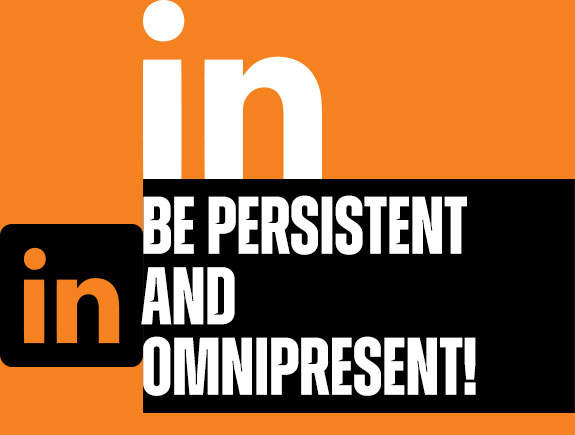LinkedIn has always been a popular social network among business people in the business communities of various industries. Though it was not as popular before as it is now, in recent years it has grown and attracted more and more professionals and business owners. They publish content on a daily basis and add value to this network. Many of them publish practical advice in the field in which they are experts, while others are focused on telling the story of their career path. However, tailoring posts on personal profiles is much different than creating a LinkedIn content strategy for a corporate site. In the following lines, we will do our best to share with you the observations we have made when it comes to LinkedIn and managing business profiles on this network.
The most essential question: Who is your target group?
Before you start posting content on LinkedIn, it is important to define your target audience. Define the target group you want to focus on in this business network. Asking questions helps you define the target audience you are addressing. So ask yourself: who do you want to attract and who do you want to inform about the company’s work and services? Let’s use an imaginary example to elaborate on this better.
Let’s say your company, among other things, sells software solutions for the fashion industry and its retail chains. In other words, you are in the IT industry and aim to connect with international companies that sell fashion brands in Serbia. In addition, you can also target distributors of well-known brands that have multi-brand stores in Serbia. The connection should go in the direction of those who are decision-makers in the Serbian branches of those companies. These may be the heads of the sector for modern technologies and development, who want to hear what you can offer them.
This is just one example, and it shows how important it is to define the target group so that you know exactly who you are addressing and make a plan accordingly. For the next question coming, the target group is also important.
Dilemma – which language to choose?
This is one of the main dilemmas for many companies coming from outside the English-speaking world. The language LinkedIn posts should be and how to choose Serbian or English is easy to solve if you follow the following tips:
- If your product is intended for the local market, then it is best to build awareness of your company and brand in the Serbian language,
- B2B companies that sell services intended for the local market, should choose Serbian as the language to address potential buyers,
- For all companies whose products or services are intended for the international market, the best way to try to attract their interest is to address them in English in their posts.
So, once again, it is clear that defining the target group is the most important initial step in strategic planning, all further decisions, and solving dilemmas depend on it.
What kind of content should be published?
Once you define the target group and the language to communicate in our posts, it is time to start creating a content strategy. On the company page, the content that is published should be a mix of different posts. So, in the first place, you should make educational announcements about your business and your niche, then you should work on employer branding, and finally, the posts should present the products and services you offer.
Products and services should be presented in an unobtrusive way, and the whole profile should not have a sales character. They should not be represented in every publication but should have a measure. The best way to promote a company is to be authentic and offer added value through information when you create content and copies for posts. Below are specific ideas for LinkedIn posts you can post on your company profile:
- Relevant news from the industry you belong to,
- Make sure to write about the latest achievements you have made and are proud of,
- Historical facts about the company are always good content, which speaks of the beginnings and progress of the company,
- To attract new professionals, publish business culture posts within your company,
- If the media talks about you, the director, or employees, share PR announcements with your followers,
- Content created in the company itself, such as blogs, podcasts, YT videos, etc., should also be shared.
Be persistent and omnipresent!
As is the case with other social networks – presence and perseverance are most appreciated. To be successful on LinkedIn, it’s important to keep your content posted. This does not mean you should publish every day, but you should choose the days when you will publish and stick to that plan. With LinkedIn, it’s easier than with other networks, because you only need to publish content on weekdays. This is the best tactic to avoid short reach, as most people do not interact with this business network on weekends. You should definitely test the best time to post and then post at that specific time. Some research shows that the best time for posting is between 8:00 and 14:00, from Tuesday to Thursday.
Connect with your followers
The main parts of the strategy are finished in the previous segment of the blog, so now is the time to write a few lines about what to do when you start publishing content. So when you start posting content, don’t forget to connect with followers. Reach and visibility on LinkedIn can be increased if you encourage followers to comment and interact. It is important to answer them because that is what the algorithm of all networks appreciates.
Also, be sure to check the notifications to see if anyone has mentioned you. That way you will see in what context someone mentions your company, so if the comment is positive you would definitely like to say – thank you. If, on the other hand, the comment is of a negative nature, you have the opportunity to respond to it and show the principled attitude of your company. In addition to all this, responding to mentions is also good for building community and strengthening relationships with followers.
If you have any questions about LinkedIn and the way it works, or you think running a company profile is too complicated for you, contact us and make an appointment with our team. We have a ready answer to all your dilemmas and great knowledge about this business network.

















